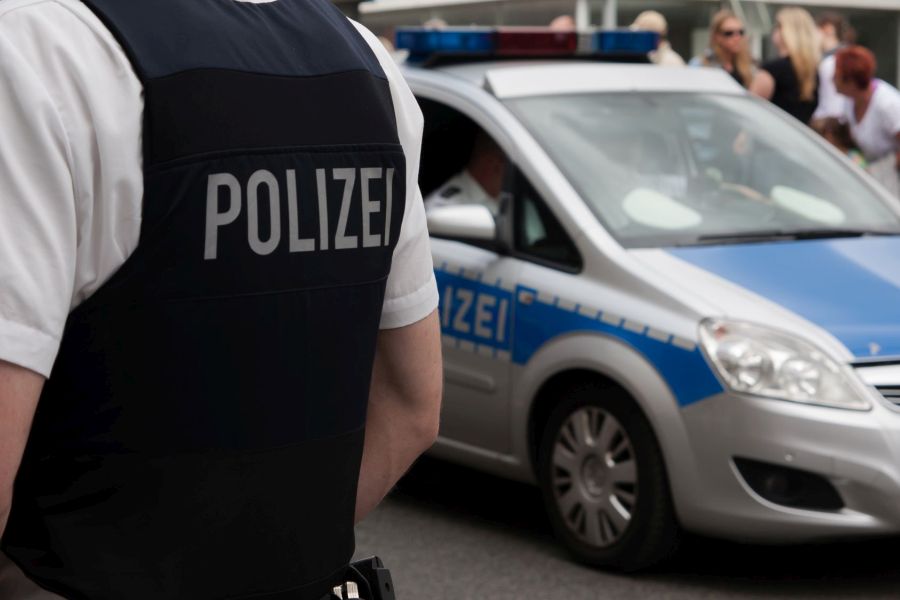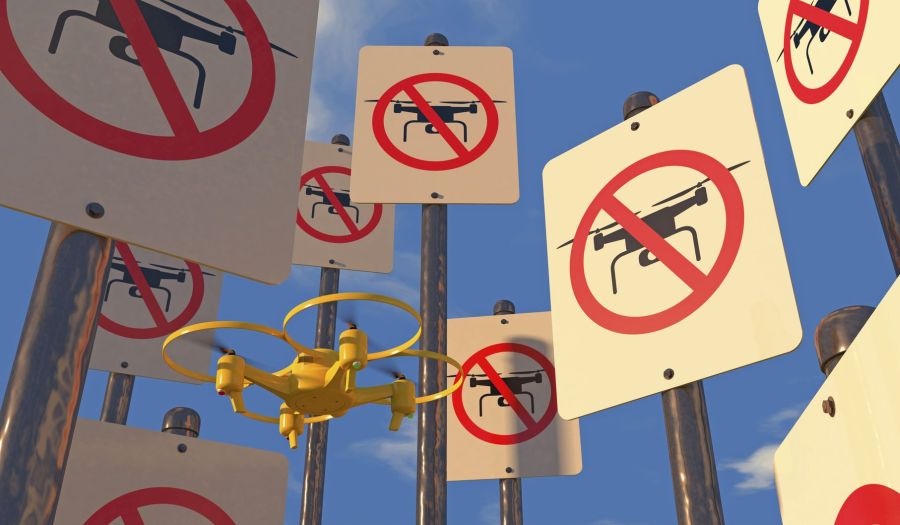Approved projects in the “Anti-terrorism aspects and activities” field
The latest wave of attacks and attempted attacks in Germany and other parts of Europe has illustrated the direct impact of this phenomenon on Germany and our society. In response, the BMBF is funding research projects aimed at developing ways of preventing and investigating terrorist attacks and identifying and prosecuting suspects.

Completed joint projects:
AMBOS: Defence against unmanned aerial vehicles for authorities and organisations with security roles

Funding codes 13N14269 to 13N14273
As yet, there is no effective means of defence against drones being used for terrorist activity. The bilateral German-Austrian project AMBOS would create a system for anti-drone defence in defined security zones. The intention was that it will detect approaching drones, analyse their threat potential and develop effective defence measures. The aim was that the system will facilitate early identification of unmanned aerial vehicles and initiation of targeted intervention.
More information (only available in German)
ArGUS: Assistance system for situation-aware defence against UAS systems

Funding codes 13N14258 bis 13N14264
In the space of a few short years, unmanned aerial systems (UASs) have become widespread products. Even powerful systems can now be easily operated by inexperienced individuals, which means that they can also be used for illegal or terrorist activities. The ArGUS joint project is developing an assistance system for emergency services, which will use a combination of sensors to detect UASs at an early stage. It will supply a detailed threat analysis for the emergency personnel and, where appropriate, recommendations for countermeasures that they can implement.
More information (only available in German)
DURCHBLICK: Detection of different improvised explosive and incendiary devices by means of intelligent analytical sensors

Funding codes 13N14328 bis 13N14334
With an increasing number of easy-to-follow instructions for making improvised explosive and incendiary devices available on the Web, emergency and security services must permanently be able to swiftly and reliably examine suspicious objects, such as unattended luggage or waste bins that have been tampered with. The aim of the Austrian-German project DURCHBLICK was to provide a robot-assisted, high-performance sensor system that can examine objects - particularly those that are not accessible from all sides. The project would also investigate ethical and legal issues surrounding the use of this technology with regard to emergency personnel and third parties.
DURCHBLICK project outline (PDF, only available in German)
FLORIDA: Flexible, semi-automated video forensics system for the analysis of mass video data

Funding codes 13N14250 to 13N14256
As shown by the terror attacks in Nice, Paris and Boston, investigators need to be able to evaluate heterogeneous video and image data related to the scene as quickly as possible if they are to achieve swift success. At the moment, they do not have analytical systems that would allow them to do that. This bilateral German-Austrian project created a system for visual and auditory analysis of mass image and video data. The aim was to make it possible to reconstruct the sequence of events more quickly and spot potential suspects promptly.
FLORIDA project outline (PDF, only available in German)
MIDRAS: Micro-drone defence system

Funding codes 13N14310 bis 13N14315
In recent years, there has been a sharp increase in the number of micro-drones freely available on the market. Criminal and terrorist groupings have recognised the advantages of small drones and there is a risk that they might use them for their causes. However, there are hardly any suitable detection and defence systems on the market. The aim of the MIDRAS project is to adapt the existing range of systems by adding innovative technology with which to detect and defend against micro-drones. The intention is that the system will enable drones to be detected and classified as well as facilitating defence measures in line with the situation at hand.
MIDRAS project outline (PDF, only available in German)
ORAS: Sensor-based monitoring and alarm system for detecting and tracking unmanned aerial systems

Funding codes 13N14275 to 13N14279
The risk of criminals or terrorists using unmanned aerial systems (UAS’s) is constantly increasing. Targeted, rapid detection of such systems is therefore crucial to providing defence against potential threats. The ORAS project is intended to produce a system that will enable approaching micro air vehicles to be detected reliably. The aim is to develop an all-weather detection system that will be able to locate UAS’s reliably, even if there are several approaching, and assess their threat potential.
ORAS project outline (PDF, only available in German)
PANDORA: Propaganda, mobilisation and radicalisation intended to incite violence in both the virtual and the real world

Fundin codes 13N14297 to 13N14302
Extremists are increasingly using the internet and social networks for their propaganda. However, as yet there has been little research on the impact of internet propaganda on the real world. The PANDORA project is examining the extremist ideas presented on the internet and on social media and how they contribute to radicalisation. A further focus of the analysis will be whether there are any similarities between right-wing and Islamist propaganda. The project is intended to deliver tools and strategies for preventive measures, political education and early detection of radicalisation processes.
More information (only available in German)
POLINEX: Portal with an inexpensive IMS network for contactless detection of explosives on the body

Funding codes 13N13246 to 13N14248
In recent years,cities in Europe like Brussels, Istanbul and Paris have been shaken by terrorist bomb attacks. Often, the attackers use improvised explosive devices and set them off in places frequented by large numbers of people. To provide more effective protection for large groups of people, techniques are required that enable explosives to be detected even when the person carrying them is moving about. The POLINEX research project is therefore developing a sensor-equipped portal that will enable even minimum traces of explosives in the air to be detected.
POLINEX project outline (PDF, only available in German)
RadigZ: Radicalisation in the digital age

Funding codes 13N14280 to 13N14287
Radicalisation processes can be intensified and accelerated through the internet since extremist content can be made available to a large number of people quickly, cheaply and without being monitored. The RadigZ project therefore aims to prevent radicalisation processes and to immunise people against radical ideologies spread on the internet. The team is developing a range of prevention methods and recommendations to do this. They will take into account the specific features of the different extremist ideologies that exist and will be provided to the relevant target groups on one internet platform.
RadigZ project outline (PDF, only available in German)
X-SONAR: Analysis of extremist tendencies in social networks

Funding codes 13N 14235 to 13N14240
People tend to have fewer inhibitions on the internet because they think they can remain anonymous. As a result, it does not take much for a person who has already made extremist statements to call on others to commit violent acts. Extremist groups use the internet to recruit supporters and volunteers for attacks. The aim of X-SONAR is to study the development of radicalisation processes in online networks, blogs and internet forums. The work includes analysing contemptuous discourse and criminal behaviour in order to identify patterns of radicalisation and to develop indicators with which radical tendencies can be detected at an early stage. The intention is that the resulting measures will enable investigating authorities and civil society actors to tackle radicalisation processes early on.
X-SONAR project outline (PDF, only available in German)